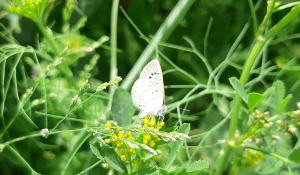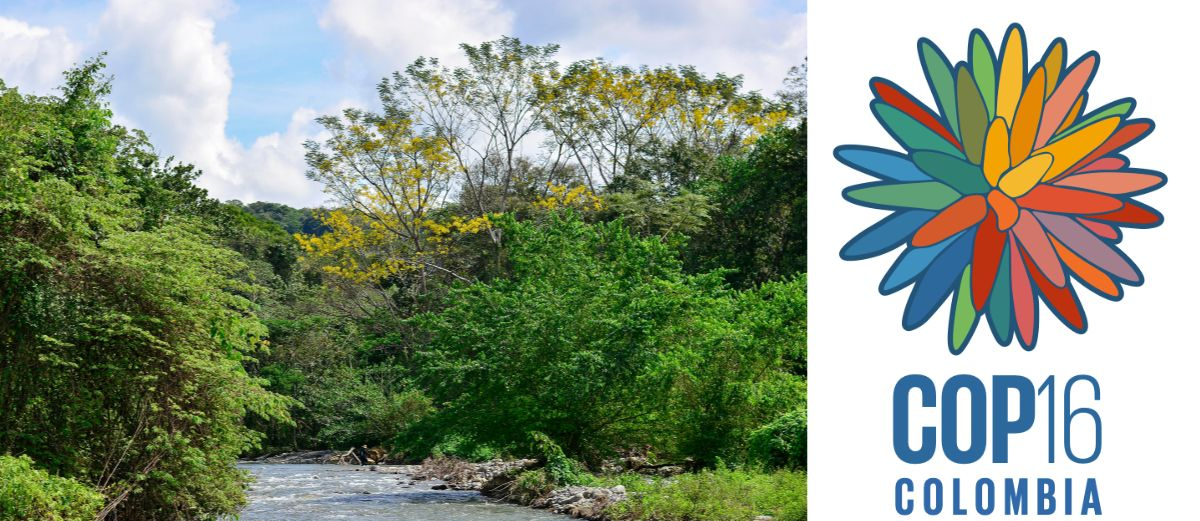The COP16 UN Biodiversity Conference in Colombia explained
COP16, the Conference of the Parties to the Convention on Biological Diversity (CBD), will be the first Biodiversity COP since the adoption of the Kunming-Montreal Global Biodiversity Framework at COP15 in December 2022, which took place in Montreal. At that time, the Parties agreed to guide global action for nature towards 2030. This plan includes concrete actions to halt and reverse the loss of nature, including protecting 30% of the planet and restoring 30% of degraded ecosystems. Known as the 30x30, this framework includes 23 targets aimed at reversing habitat and species loss.
CBD is a multilateral environmental agreement that promotes nature alongside human well-being. The treaty was drafted in 1992 at the Rio Earth Summit and it is often referred to as the sister convention to the UN Climate Convention. The goal of Biodiversity COP is to foster the protection, conservation, and sustainable use of biological diversity across the globe.
For more on how COP16 differs from COP29, please read our article.
When and who will attend COP16?
COP16 will take place between the 21st of October and the 1st of November 2024 in Cali, Colombia, which is one of the most diverse regions in the world. The Convention will bring together governments from over 190 countries (excluding the United States), observer organizations, indigenous communities, businesses, youth groups, civil society academia, and the general public.
What are the main topics of discussion?
At COP16, governments will need to review the state of implementation of the Kunming-Montreal Global Biodiversity Framework. The Parties to the Convention will need to show their alignment of the National Biodiversity Strategies and Action Plans (NBSAPs) with the Framework. Additionally, the Parties are due to finalize and operationalize the multilateral mechanism on the fair and equitable sharing of benefits from the use of digital sequence information on genetic resources.
The three key areas of discussion include:
1. Translating the Biodiversity Plan into resolute national action:
During the Convention, Parties are expected to demonstrate the alignment of their National Biodiversity Strategies and Action Plans (NBSAPs) with the Biodiversity Plan, which includes 23 action-oriented targets to be undertaken by 2030. Monitoring, reporting, and reviewing of implementation will be key to driving evidence-based progress. Check out our articles for more information on the impact of global warming on biodiversity, and the rise of biodiversity credits.
2. Mobilizing and bolstering the means of implementation:
Establishing adequate means of implementation, including financial resources, capacity-building, technical and scientific, and access and transfer of technology, is key to implementing the Biodiversity Plan. One of the biggest challenges will be closing the biodiversity finance gap of 700 billion per year and supporting developing countries, Least Developed Countries, Small Island Developing States, and countries with economies in transition. Especially since the Parties have 2030 targets.
3. Accelerating progress on access and benefit-sharing:
The aim of Article 15 is to ensure that how genetic resources are accessed and used maximizes the benefits for users, providers, and the ecology and communities where they are found. This specifically refers to traditional knowledge of indigenous peoples and local communities (IPCLs). At COP16, Parties are expected to agree on operationalizing the multilateral mechanism for the fair and equitable sharing of benefits from Digital Sequence Information on genetic resources, including a global fund. Negotiations in preparation for this will be held in Montreal in August.

Why does ClimateSeed believe COP16 is important?
Today, we are facing a nature crisis where almost one million species are threatened with extinction, many within decades, ecosystems are suffering, such as the Amazon rainforest from deforestation and 85% of wetlands, such as salt marshes and mangroves have disappeared.
At ClimateSeed, we believe that globally agreed targets for nature are crucial to protect our planet from biodiversity loss and focus our efforts towards a more nature-positive future. The 2015 Paris Agreements provided guidance to fight climate change, so now the 10-year Global Biodiversity Framework can drive efforts to protect biodiversity, which is as urgent as the climate crisis.
By supporting emission reduction projects that ClimateSeed has carefully selected, organizations not only tackle climate change as these projects avoid or remove carbon, but also protect vital ecosystems, such as forests and wetlands including peatlands and mangroves. If you’re interested in learning more about COP16, please read our article on how Biodiversity COP differs from Climate COP.
Sources:
- Convention on Biological Diversity
- Convention on Biological Diversity - 3 Priority Areas
- The Nature Conservancy
- The Nature Conservancy - 30x30
- United Nations
- WCL
Common Q&As
Companies, particularly those involved in agriculture, construction, and resource extraction, should aim to minimize their impact on natural habitats. Strategies like precision agriculture, vertical farming, and sustainable forestry practices can limit the conversion of wild areas into developed land.
For a deeper dive into this read our article:
The Impact of Global Warming on Biodiversity: How Can Companies Help Preserve It?
Biodiversity credits are related to, but distinct from, voluntary carbon credits. While a carbon credit represents a tonne of carbon dioxide equivalent avoided or removed from the atmosphere, biodiversity credits represent units of biodiversity restored or preserved, which may have a variety of distinctive characteristics.
For more information, read our article:
The Rise of Biodiversity Credits: The Standards to Reach Nature Positive.
Both the Climate COP and Biodiversity COP serve as platforms to address two interconnected yet distinct global environmental challenges—climate change and biodiversity loss—both of which originated from the commitments made at the 1992 Rio Earth Summit.
For more information, read our article: Biodiversity COP: How does it differ from the Climate COP?
Share this
You May Also Like
These Related Stories

Global Warming’s Impact on Biodiversity: How Companies Can Help?

The COP29 UN Climate Conference in Baku explained



